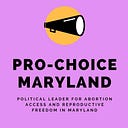Reproductive Freedom for Asian American and Pacific Islander Communities Is Under Attack
by Krithika Pennathur
Last year, Assemblyman Marcos Crespo of the New York City Council reintroduced the Prenatal Nondiscrimination Act (PRENDA), which bans sex-selective abortion, on the grounds that Asian American and Pacific Islander (AAPI) women were “preferring sons over women.” 1 This prompted rightful outcries from AAPI communities, as the dangerous trope of AAPI women “preferring sons over women” is THE main justification for these bans. 1
Last year wasn’t the first time this ban was introduced. Over the past two decades, various versions of these sex-selective abortion bans have been instituted. PRENDA bans sex-selective abortion and mandates abortion providers report to law enforcement if they suspect a person is performing an abortion for the purpose of sex-selection. 2 If providers do not report, they could face legal punishment. 2
Sex selective abortions are defined as terminations of pregnancies (abortions) that are performed because of the predicted biological sex of the fetus. 3 Existing international research suggests that male-biased sex ratios have resulted from the practice of sex-selection on a global scale. 4 However, there is little evidence to suggest that this is a problem in the United States. 5 Despite the lack of evidence, nine states have implemented these sex-selective abortion bans. 3
There is a significant amount of U.S.-based scholarship from economists exclusively studying the relationship between Chinese and Indian immigrant women and sex-selective abortion bans. Two studies in particular provide the empirical justification for several versions of PRENDA. One study — a report from 1990 by Harvard economist Amartya Sen — estimated that since 1900 around 100 million women were “demographically missing” due to sexist practices, which includes sex selective abortion. 6 The other commonly cited report is from March 2008 by Douglas Almond and Lena Edlund. This report used U.S. census data from 2000 and showed when Chinese, Indian, and Korean immigrants have two girls born in their families, the third birth in those families were skewed towards boys. 7 In legislative efforts to ban abortion access, both of these studies have been used to contextualize having this problem in the United States.
Within sex-selective abortion ban legislative documents, there are explicit attacks on China and India, which are cited as “countries with longstanding experience with sex-selection abortion.” 4,8,9,10 Additionally, it is commonly stated in these documents that China and India’s practices of sex-selective abortions are “vehemently and repeatedly condemned by United States congressional relations.” 4,8,9,10
However, recent evidence proves that AAPI women are not engaging in sex-selective abortion practices at higher rates than the general population. In analyzing data from 2007 to 2011 from the American Community Survey, there was no support that Chinese, Korean, and Indian families have higher male-biased sex ratios. 5 A couple of years later, findings from a 2014 CIA report showed that India and China did not have highest male-biased sex ratios. 11 Additionally, in states that did have sex-selective bans, there is no evidence to show that sex-ratios changed, especially among Asian women. 5
Despite the triumphs of this recent evidence, it is important to return to the fact that most research focused on AAPI women focuses on sex-selective abortions. Conducting research solely on AAPI populations and their relationship to sex-selective abortions has a serious consequence of enforcing the ideology that these abortions are an “Asian” problem. This severely stigmatizes AAPI people.
Advocates of the AAPI community have stated this stigmatization reduces reproductive healthcare options for Asian communities. 2 Because of the ingrained stigmatization, legislation like PRENDA can scare medical care providers into making assumptions about AAPI women seeking abortion care. 2 Thus, it can erode trust between healthcare providers and AAPI communities, creating a barrier in accessing reproductive healthcare. 2
As a child of Indian immigrants, I want to be able to go to a provider and know that I have safe access to abortion care. I want the AAPI people in my life to be able to do the same. Legislation like PRENDA makes it harder for me to feel comfortable getting an abortion. If providers are mandated to report based on suspicion, there is a higher chance that I will be profiled in this context. PRENDA is framed as “saving women,” but in reality, these bans aren’t about fighting gender discrimination. They’re a direct attack on abortion access for AAPI communities.
I cannot be reduced to one image and one stereotype. And most importantly, my reproductive healthcare choices cannot be either.
References
1. Stop scapegoating Asian-American culture to justify bans on ‘sex-selective’ abortions. New York Daily News. https://www.nydailynews.com/opinion/ny-oped-asian-americans-sex-selective-abortion-20200225-sdtihsrufzactmybpvwlemv7oe-story.html. Published Feb 25, 2020. Accessed June 11, 2020.
2. New York City Asian American Organizing Blueprint For Reproductive Justice. NAPAWF; 2017. https://static1.squarespace.com/static/5ad64e52ec4eb7f94e7bd82d/t/5d5aa5ed48099500015fc863/1566221805839/nyc-asian-american-organizing-blueprint.pdf. Accessed June 11, 2020.
3. Abortion Bans in Cases of Sex or Race Selection or Genetic Anomaly. Guttmacher Institute. https://www.guttmacher.org/state-policy/explore/abortion-bans-cases-sex-or-race-selection-or-genetic-anomaly. Published May 1, 2020. Accessed June 11, 2020.
4. Prenatal Nondiscrimination Act of 2013, H.R. 447, 113th Cong. (2013).
5. Replacing Myths with Facts: Sex-Selective Abortion Laws in the United States. NAPAWF; 2014. https://static1.squarespace.com/static/5ad64e52ec4eb7f94e7bd82d/t/5d2ca0d5cd54a90001b97595/1563205847373/replacing-myths-with-facts.pdf. Accessed June 11, 2020.
6. Sen A. More Than 100 Million Women Are Missing. https://www.semanticscholar.org/paper/More-Than-100-Million-Women-Are-Missing-Sen/9295de191acce936443aa9878cd3ea7db9a7a19f. Published 1990. Accessed June 11, 2020.
7. Almond D, Edlund L. Son-biased sex ratios in the 2000 United States Census. PNAS. https://www.pnas.org/content/105/15/5681. Published April 15, 2008. Accessed June 11, 2020.
8. Prenatal Nondiscrimination Act of 2012, H.R. 3541, 112th Cong. (2012).
9. Prenatal Nondiscrimination Act of 2015. S.48, 114th Cong. (2015).
10. Prenatal Nondiscrimination Act of 2017. H.R. 147, 115th Cong. (2017).
11. Field Listing: Sex Ratio. The World Facebook. https://www.cia.gov/library/publications/the-world-factbook/fields/351.html. Published 2018. Accessed June 11, 2020.
